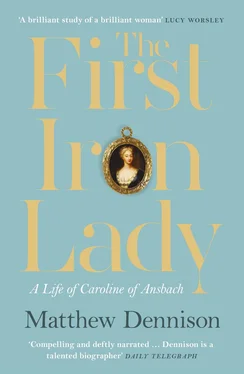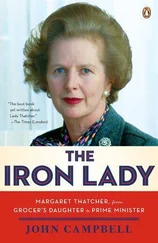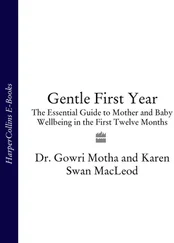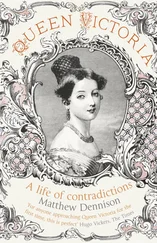Caroline’s married life began in Hanover itself. At the Leineschloss Sophia formally welcomed her, on 2 September 1705, ‘with all the expressions of kindness and respect that could be desired’. 51Her wedding took place the same evening, in the palace chapel, in a service notable for its simplicity. Caroline wore a dress of coloured silks. There was a ball and a French play, the former accompanied by modest quantities of alcohol, Caroline’s introduction to the abstemiousness that was a feature of Hanoverian court life. 52George Augustus slept through the wedding sermon, provoking predictably ribald comment. ‘What good news for the bride that he should be well rested,’ Liselotte wrote, the sort of quip that, a century later, earned her the epithet of the ‘ most improper Letter-writer in Europe ’. 53From England Queen Anne wrote too, letters of congratulation to Sophia and her family. Days later Sophia still remembered the faces of the congregation as ‘wreathed in smiles when we looked at the young couple’. 54George Louis was almost certainly the exception. Acrimony and impatience dominated his feelings towards his only son, and would colour aspects of his relationship with Caroline. He acknowledged her good looks but as yet made no further approaches to intimacy.
It is also possible that Caroline’s smiles lacked conviction. Both she and George Augustus had anticipated from the elector a more generous wedding present. She ‘really could not help taking notice’, wrote Lady Mary Wortley Montagu, ‘that the presents made to her on her wedding were not worthy of [George Augustus’s] bride, and at least she ought to have had all his mother’s jewels’. 55With a degree of subtlety, Caroline’s complaint was not on her own account. She protested at the suggestion of any slight to George Augustus.
A living ghost shared with Caroline and George Augustus the quarters allocated to them in Hanover’s town palace. She was the prince’s mother, Sophia Dorothea of Celle, and though very much alive, dead to the court and the electoral family, by whom her name was never mentioned. Not for the first time in our chronicle, her story is one of conflicted emotions, double standards and novelettish melodrama that nevertheless impacts on events to come.
Sophia Dorothea was George Louis’s first cousin. Her father was Ernest Augustus’s younger brother, George William, Duke of Celle. Her mother, Eléonore d’Olbreuse, was a Huguenot noblewoman of striking good looks, whose commoner blood earned from Liselotte the pithy dismissal of ‘mouse droppings in the pepper’. 56Neither love nor romance played its part in forging the cousins’ disastrous union. At the time of their marriage in November 1682, Sophia Dorothea was sixteen; spoilt, self-willed, preoccupied with dress and luxuries, but notably pretty in the curvaceous, pale-skinned manner of the times, and, if an early portrait by Jacob Ferdinand Voet can be trusted, lacking in confidence and anxious to please. 57George Louis was twenty-two. By the terms of their marriage contract, kept secret from Sophia Dorothea, he received straight away her entire dowry; at her parents’ death, their revenues and property became his too. It was an arrangement guaranteed to deny George Louis’s bride the possibility of financial independence.
Opportunities for acquaintance had recurred throughout the cousins’ childhoods; decided antipathy predated their marriage. Although G.K. Chesterton exaggerated in describing George Louis in 1917 as ‘the barbarian from beyond the Rhine’, his preoccupations were strenuously masculine. 58Off the battlefield he enjoyed hunting. ‘Low of stature, of features coarse, of aspect dull and placid’, he inherited few of his mother’s rarefied interests, only walking and music, and no aptitude at all for the role of romantic swain. 59Like many German princelings, including his lecherous father, he began as a busy fornicator, though his momentum would slow with increasing responsibility. He was otherwise undemonstrative and emotionally costive. He was sixteen when Figuelotte’s under-governess fell pregnant with his first child: Sophia castigated him as a ‘progenitor of bastards’. 60His first full-time mistress shortly afterwards was Maria Katharine von Meysenburg, the sister of his father’s redoubtable mistress Countess von Platen. With no eye to psychological complexities, this curious arrangement had been brokered by Ernest Augustus himself. 61His mother insisted that George Louis would ‘marry a cripple if he could serve the house’, but in the event this was not required of him. 62Instead, despite rumours that Sophia’s English family wished him to marry Princess Anne of York, the future Queen Anne, and, in 1680, an inconclusive trip to London apparently to that end, his father chose for George Louis his pretty young cousin in neighbouring Celle.
It was an arranged royal marriage like others before and since, and compatibility between the partners was an afterthought. Ernest Augustus’s plan was twofold: to bring together the disparate territorial possessions of his family, and to ensure their long-term security by introducing primogeniture in the next generation. George Louis’s marriage enabled Ernest Augustus to knit together Calenburg, Celle and Hanover. In time both George Louis and his eldest son would inherit outright the contiguous raggle-taggle of all three duchies, as well as the fourth segment in the patrimonial jigsaw, the prince-bishopric of Osnabrück.
It was unfortunate that George Louis’s response to the prospect of marrying Sophia Dorothea combined delight in her good looks with ‘repugnance’ at aspects of her character, and that her own reaction was something akin: of such was the stuff of political necessity. 63The glister of Sophia Dorothea’s inheritance outweighed her temperamental and emotional unsuitability to play the parts of George Louis’s wife and Hanover’s electress, outweighed even the £40,000 dowry of Princess Anne, with additional annual promises of £10,000. A portrait of the mid-1680s by Henri Gascar depicts the married Sophia Dorothea with flowers in her curly hair. Her dress of richly woven fabric slips alluringly from her shoulder. A garland of flowers in her hand represents fertility and the promise of springtime, but nothing in this seductively decorative image suggests gravity.
As the marriage approached, Sophia wrote tactfully to the bride’s father that she had never imagined George Louis capable of so violent a passion. 64Three of his four younger brothers were similarly smitten, with Frederick Augustus serenading his sister-in-law as ‘ bellissime ’, ‘most beautiful’. For her part Sophia Dorothea hurled a diamond-set miniature of George Louis against the wall. But the couple’s first child and only son, George Augustus, was born a year after their wedding. At the outset, irrespective of bridal aversion, youthful sexual excitement contributed its precarious bond.
Even taking into account George Louis’s repeated absences during the first years of his marriage, on campaign with the imperial army fighting the Turks, the interval between Sophia Dorothea’s two pregnancies – in 1683 and 1688 – tells its own tale of marital harmony unravelling. In 1689, the year after she gave birth to a daughter named after her, Sophia Dorothea met the man who three years later became her lover, Count Philip Christopher von Königsmarck. Their relationship tracked a familiar course: acquaintances, correspondents, bedfellows. The pretty electress’s infatuation was stoked by boredom, a comprehensive rejection of every aspect of her married life from Hanoverian court etiquette to behaviour on George Louis’s part that encompassed neglect, overt hostility and even acts of frightening physical violence, described in some accounts as close to attempted strangling. Above all she was jealous.
Читать дальше












